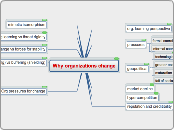Turning Efffect of Forces
Center of Gravity
How to find the centre of gravity
For a regular-shaped object the centre of gravity is at its centre (or geometrical centre)
For an irregular object its centre of gravity is always vertically below the pivot when it is hanging freely about it
What is centre of gravity?
Is the point where the whole weight of the body seems to act
Why does a uniform metre rule
balance only at the 50cm mark?
Because that is the point where the whole weight of the body seems to act.
Principle of Moments
Conditions for equilibrium
When an object is in euilibrium, it must satisfy both
conditions as follows,
1. All forces acting on it are balanced, i.e. resultant force is zero
2. The resultant moment about the pivot is zero, i.e. the Principle of Moments must apply.
What is "Principle of Moments"
When a body is in equilibrium, the sum of clockwise moments about a pivot is equal to the sum of anticlockwise moments about the same pivot
How does a beam balance
measure mass?
For the beam to balance, the turning effects of these two forces must be equal. Therefore,
mg x d = Sg x d
Simplifying, m = S
Thus when the equal-arm beam is balanced (or in equilibrium), the mass of the object m is equal to the total standard masses S.
Moment aout a pivot is "F x d"
Thus, anticlockwise moment = mg x d
and clockwise moment = Sg x d
Weight=mg
Where g is the gravitational field strength or acceleration of free fall.
Similarly, the force acting on the total standard masses is Sg
Moments
the turning effect/moment or a force depends on
1.magnitude of the force
2.perpendicular distance between the points of application of the force and pivot.
the moment of a force is also called the torque
the moment of the force is the turning effect of a force about a point or the ability of a force to make something turn.
Stability
Definition
Stability refers to the ability of an object
to return to its original position after it
has been tilted slightly
3 Cases of Equilibrium
CONCLUSION
The area of its base is as wide as possible
Centre of gravity is as low as possible
Case #3: (Neutral equilibrium)
Neutral equilibrium because if it is sloghtly displaced or rolled, it will stay in its new position
There is no moment provided by its weight about the point of contact to turn the paper cone
THe lines of action of the force of weight and contact always coincides
Its centre of gravity neither rises nor falls; it remains at the same level about the surface supporting it
Case #2: (Unstable equilibrium)
Unstable equilibrium because if it is tilted slightly, it topples over :(
The clockwise motion of its weight about the point of contact(tip of the cone, upside down)
The line of action of its weight lies outside the base area of the cone
Its centre of gravity falls and continues to fall further
Case #1: (Stable equilibrium)
Stable equilibrium is due to it returning to
its original position without toppling
Things to note
The anti-clockwise moton of its weight is about the point of contact(at the side of the cone) causes the cone to return to its original position! :D
The line of action of its weight lies inside the base area of
the cone
Its Centre of gravity rises and then falls back again! :D









